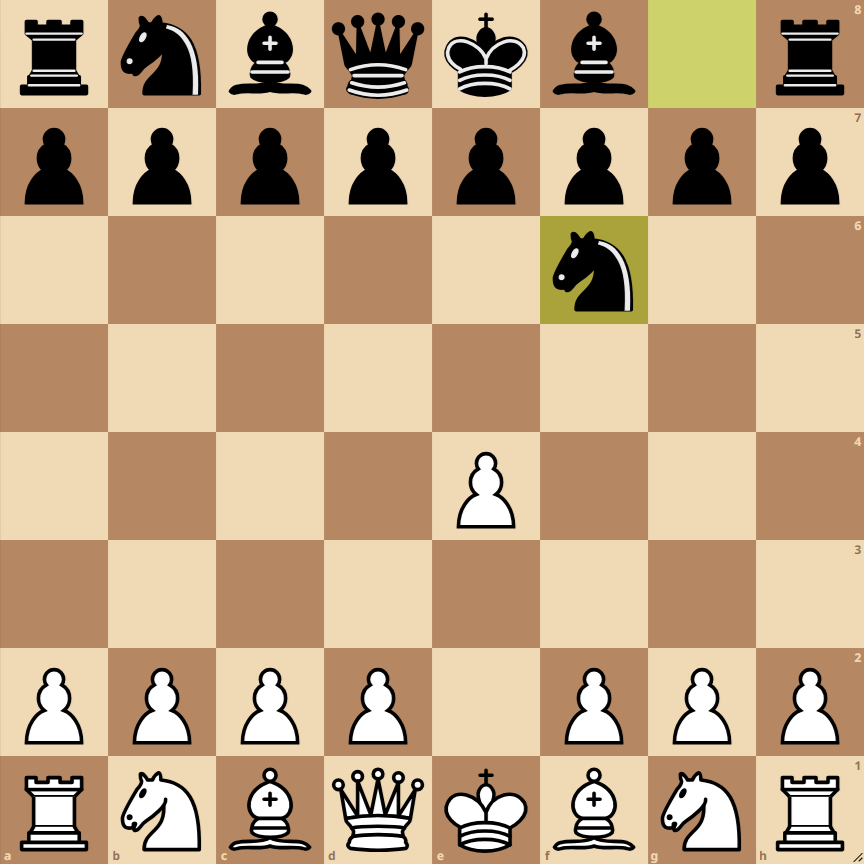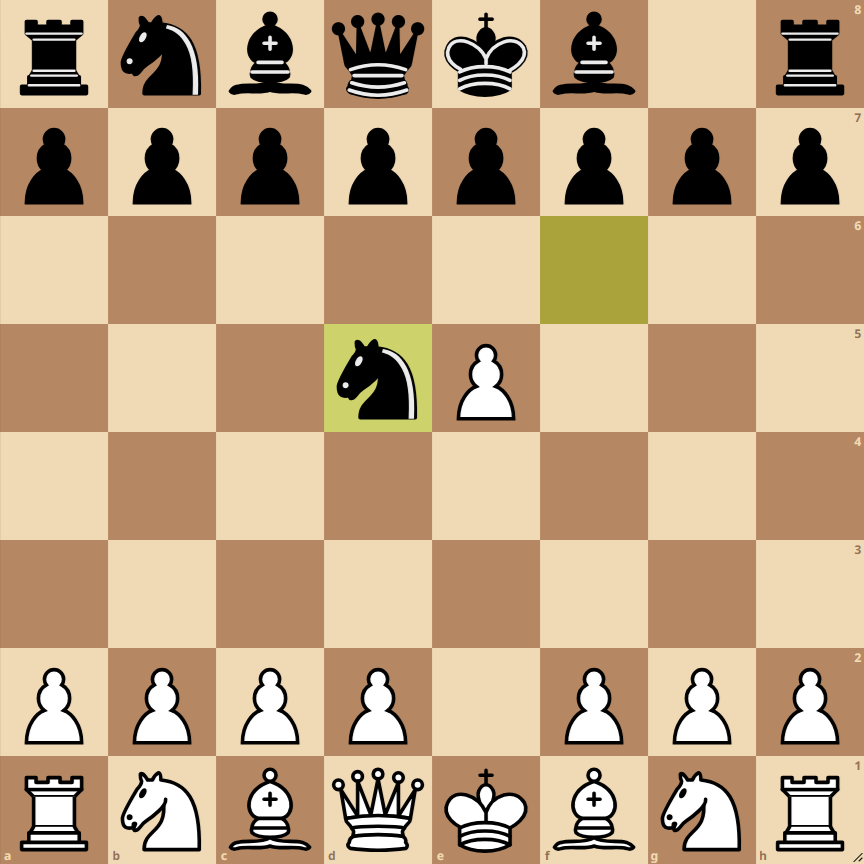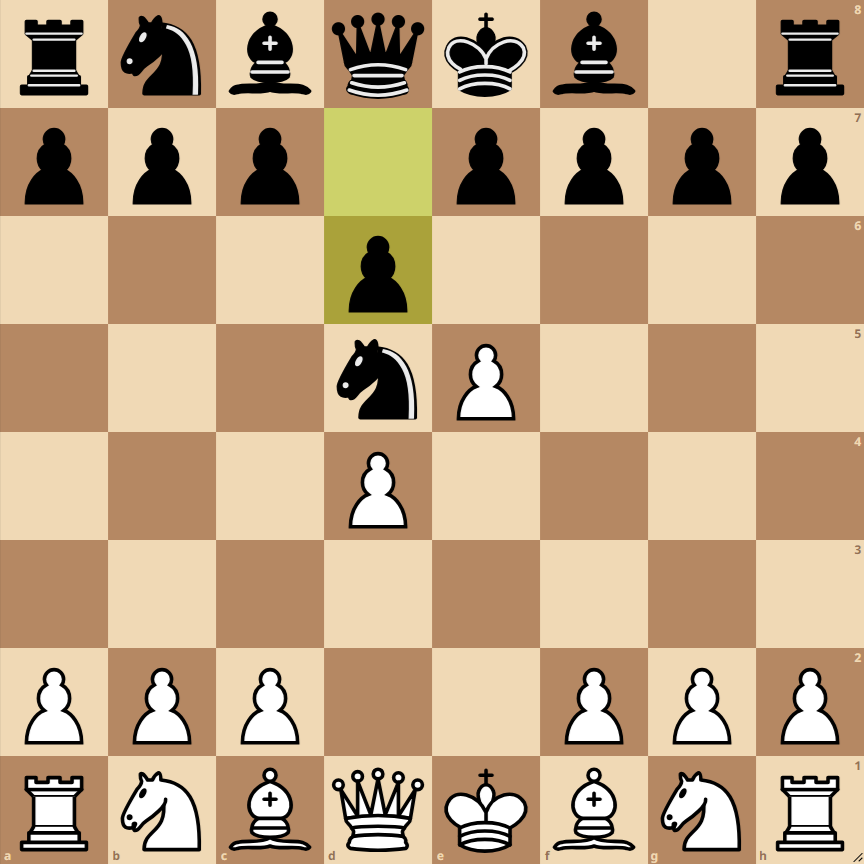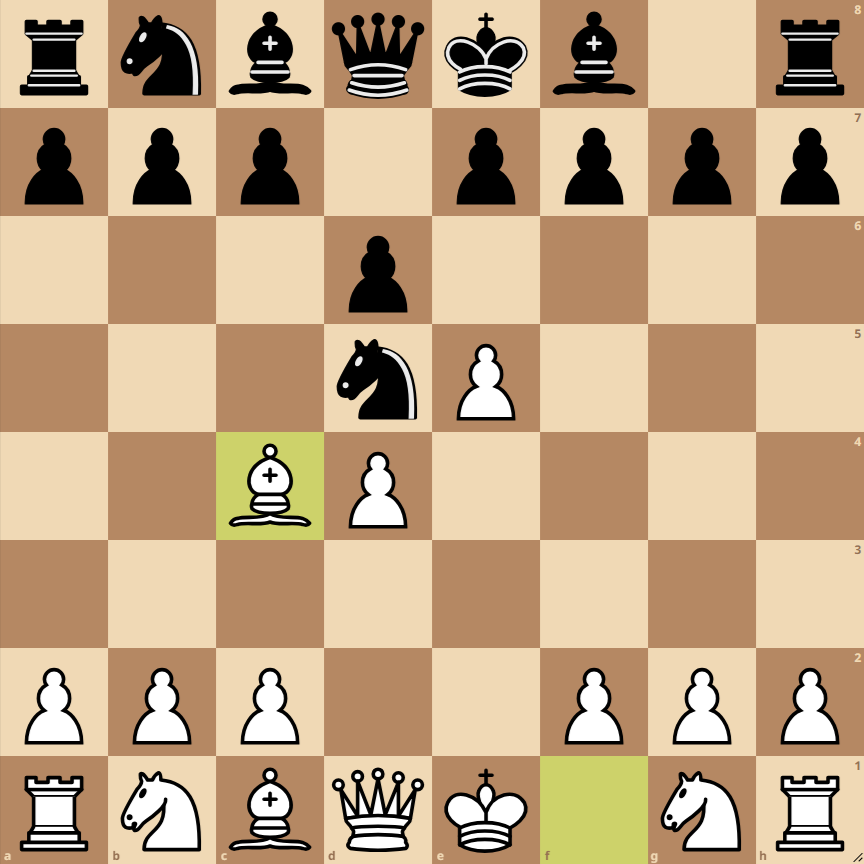How to Play the Alekhine Defense Balogh Variation



- 1. e4: White opens with the king’s pawn, controlling the center and preparing to develop their pieces.
- 1… Nf6: Black responds with the knight to f6, attacking the e4 pawn and beginning to control the center. This is the essence of the Alekhine Defense, where Black aims to provoke White’s pawns to weaken their central structure.
- 2. e5: White advances the pawn to attack the knight on f6, gaining space in the center.
- 2… Nd5: The Black knight retreats to d5, a safer position. This move is typical in the Alekhine Defense, where the knight looks for alternative routes to maintain pressure.
- 3. d4: White develops another pawn in the center, reinforcing their control and preparing to develop other pieces like the bishop or queen.
- 3… d6: Black responds with a pawn advance, challenging White’s central pawn structure and preparing to develop the kingside bishop.
- 4. Bc4: The White bishop develops to c4, putting pressure on the knight on d5 and exerting more influence in the center.
Variations of the Alekhine Defense Balogh Variation
Modern Variation
In this variation, Black can play 4… c6, preparing b5 to challenge the bishop on c4 and expand control on the queenside. It’s a more modern line aiming to counter White’s central play with flanks’ activity.
Exchange Variation
Another option for Black is 4… e6, seeking to simplify the position with exchanges in the center. This variation leads to a more symmetrical pawn structure and a more positional game.
Aggressive Variation
A more aggressive option for Black after 4. Bc4 is to play 4… Nb6, attacking the bishop and aiming for a more dynamic game. This variation is favored by players looking to complicate the game and avoid deep theoretical lines.
Current Position:
After the moves 1. e4 Nf6 2. e5 Nd5 3. d4 d6 4. Bc4, we find ourselves in the initial position of the Alekhine Defense, specifically in the Balogh Variation. This opening is known for its rich tactical and strategic possibilities.
Board (no image):
White: Pawns on e5, d4; Bishop on c4.
Black: Knight on d5; Pawns on d6, f6.
Strategies and Tactics for Both Sides:
White:
- Center Control: White has advanced two pawns in the center, aiming to dominate it. This provides good space and maneuvering possibilities for their pieces.
- Quick Development: The bishop on c4 targets the Black kingside, potentially leading to an early attack if Black doesn’t defend properly.
- Pressure on Knight d5: White can look for ways to pressure the knight on d5, which is a central piece in Black’s strategy.
Black:
- Counterattack: The Alekhine Defense allows White to occupy the center and then counterattack. The d6 advance aims to undermine the e5 pawn.
- Knight Maneuver: The knight on d5 can move to b6 to pressure the White bishop and prepare c5, or to c6 to strengthen the center and prepare e6.
- Positional Flexibility: Black must stay flexible and be ready to change plans based on White’s actions.
Next Best Moves:
- Nb6: This move withdraws the knight from direct pressure and prepares c5. It also keeps an eye on the bishop on c4, which could become a target.
- c6: Strengthens the center and prepares e6 expansion. This move also helps develop the bishop on c8.
- e6: Aims to open lines for minor pieces and increase activity in the center. This move can lead to a more dynamic and tactical game.
In conclusion, this opening phase offers strategic opportunities for both White and Black. White seeks to capitalize on space and early development, while Black prepares for an effective counterattack. The decisions made in the upcoming moves will be crucial in establishing the foundation of the game.

